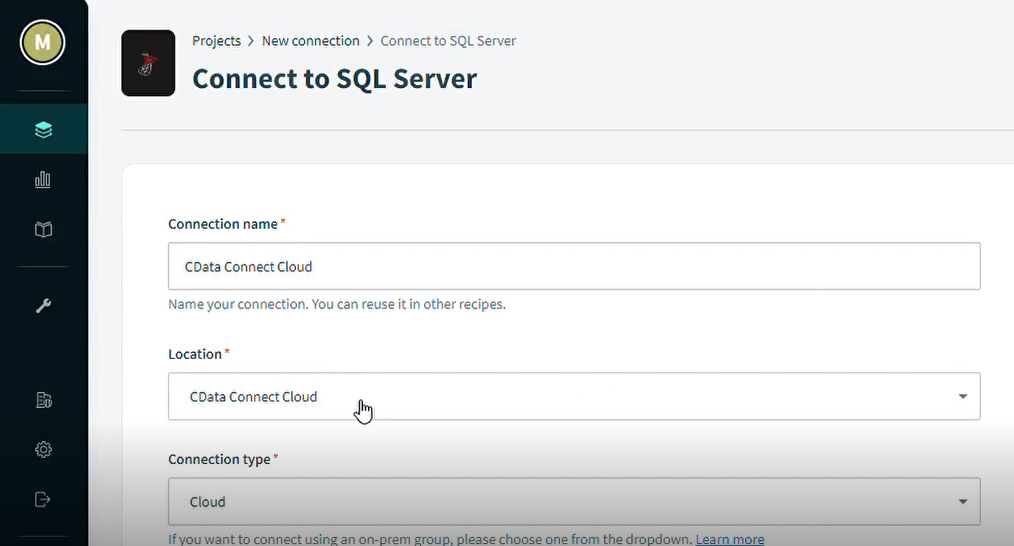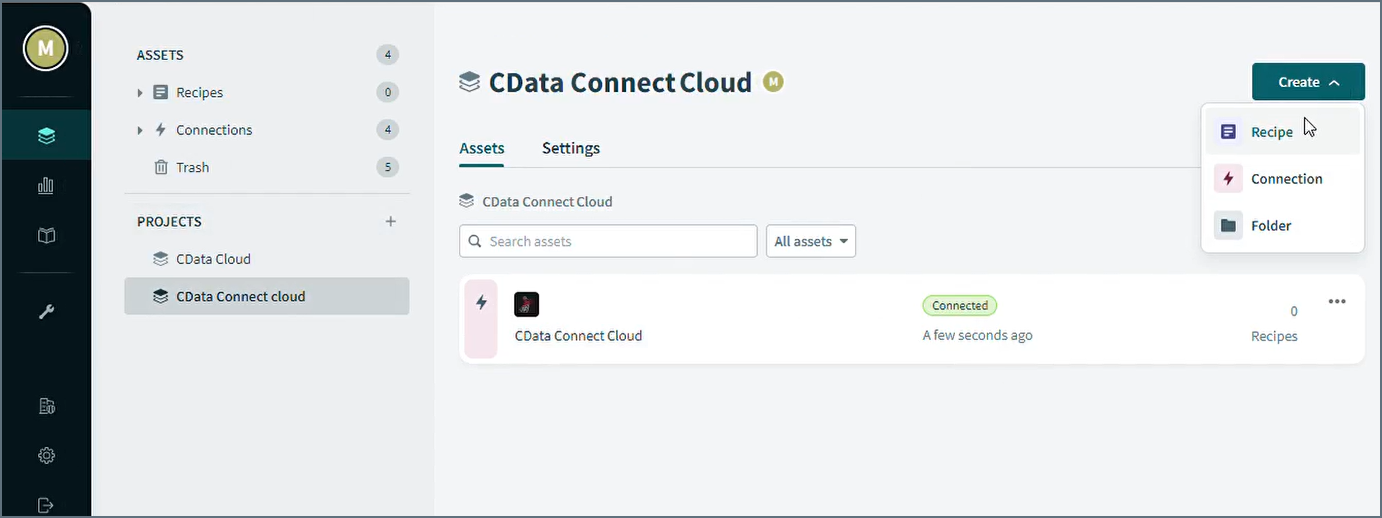Discover how a bimodal integration strategy can address the major data management challenges facing your organization today.
Get the Report →Build Automated Workflows with Live AlloyDB Data in Workato
Use CData Connect Cloud to connect to live AlloyDB data and build automated workflows in Workato.
Workato is a cloud-based automation platform that helps businesses integrate applications and automate workflows. When paired with CData Connect Cloud, you get instant, cloud-to-cloud access to AlloyDB data for visualizations, dashboards, and more. This article shows how to connect to AlloyDB and build workflows with live AlloyDB data in Workato.
CData Connect Cloud provides a pure SQL Server, cloud-to-cloud interface for AlloyDB, allowing you to easily build visualizations from live AlloyDB data in Workato. As you build automations, Workato generates SQL queries to gather data. Using optimized data processing out of the box, CData Connect Cloud pushes all supported SQL operations (filters, JOINs, etc) directly to AlloyDB, leveraging server-side processing to quickly return AlloyDB data.
Configure AlloyDB Connectivity for Workato
Connectivity to AlloyDB from Workato is made possible through CData Connect Cloud. To work with AlloyDB data from Workato, we start by creating and configuring a AlloyDB connection.
- Log into Connect Cloud, click Connections and click Add Connection
![Adding a Connection]()
- Select "AlloyDB" from the Add Connection panel
![Selecting a data source]()
-
Enter the necessary authentication properties to connect to AlloyDB.
The following connection properties are usually required in order to connect to AlloyDB.
- Server: The host name or IP of the server hosting the AlloyDB database.
- User: The user which will be used to authenticate with the AlloyDB server.
- Password: The password which will be used to authenticate with the AlloyDB server.
You can also optionally set the following:
- Database: The database to connect to when connecting to the AlloyDB Server. If this is not set, the user's default database will be used.
- Port: The port of the server hosting the AlloyDB database. This property is set to 5432 by default.
Authenticating with Standard Authentication
Standard authentication (using the user/password combination supplied earlier) is the default form of authentication.
No further action is required to leverage Standard Authentication to connect.
Authenticating with pg_hba.conf Auth Schemes
There are additional methods of authentication available which must be enabled in the pg_hba.conf file on the AlloyDB server.
Find instructions about authentication setup on the AlloyDB Server here.
Authenticating with MD5 Authentication
This authentication method must be enabled by setting the auth-method in the pg_hba.conf file to md5.
Authenticating with SASL Authentication
This authentication method must be enabled by setting the auth-method in the pg_hba.conf file to scram-sha-256.
Authenticating with Kerberos
The authentication with Kerberos is initiated by AlloyDB Server when the ∏ is trying to connect to it. You should set up Kerberos on the AlloyDB Server to activate this authentication method. Once you have Kerberos authentication set up on the AlloyDB Server, see the Kerberos section of the help documentation for details on how to authenticate with Kerberos.
![Configuring a connection (Salesforce is shown)]()
- Click Create & Test
- Navigate to the Permissions tab in the Add AlloyDB Connection page and update the User-based permissions.
![Updating permissions]()
Add a Personal Access Token
If you are connecting from a service, application, platform, or framework that does not support OAuth authentication, you can create a Personal Access Token (PAT) to use for authentication. Best practices would dictate that you create a separate PAT for each service, to maintain granularity of access.
- Click on your username at the top right of the Connect Cloud app and click User Profile.
- On the User Profile page, scroll down to the Personal Access Tokens section and click Create PAT.
- Give your PAT a name and click Create.
![Creating a new PAT]()
- The personal access token is only visible at creation, so be sure to copy it and store it securely for future use.
With the connection configured, you are ready to connect to AlloyDB data from Workato.
Automate AlloyDB Data Workflows in Workato
To establish a connection from Workato to the CData Connect Cloud Virtual SQL Server API, follow these steps.
- Log into Workato.
- In the navigation bar, click Projects.
- In your new (or existing) project, click Create > Connection.
![Creating a new Connection.]()
- In the search bar, enter "SQL Server" and open the Connect to SQL Server screen.
- In Connect to SQL Server, enter the connection name and the following connecting settings:
- Location: enter the name of the project.
- Connection type: select Cloud.
- Host: enter tds.cdata.com
- Port: enter 14333
- Username: enter your CData Connect Cloud username. This is displayed in the top-right corner of the CData Connect Cloud interface. For example, [email protected].
- Password: enter the PAT you previously generated page.
- Database: enter the Connection Name of the CData Connect Cloud data source you want to connect to (for example, AlloyDB1).
![Configuring the connection to CData Connect Cloud.]()
- Click Connect to see the Connection established message.
- Next, set up your recipe. In your project, click Create > Recipe.
![Creating a new Recipe.]()
- In Set up your recipe, enter the name and location of your recipe.
- Select Run on a schedule.
- Select the action to occur on the schedule.
- Select a table from your Connect Cloud connection and any applicable filters.
![Selecting tables for the Recipe (Jira is shown).]()
- Click Save to save the recipe.
- Click Test Jobs to test you recipe.
Real-Time Access to AlloyDB Data from Cloud Applications
At this point, you have a direct, cloud-to-cloud connection to live AlloyDB data from Workato for workflows and automations. For more information on gaining live access to data from more than 100 SaaS, Big Data, and NoSQL sources from cloud applications like Workato, refer to our Connect Cloud page.














